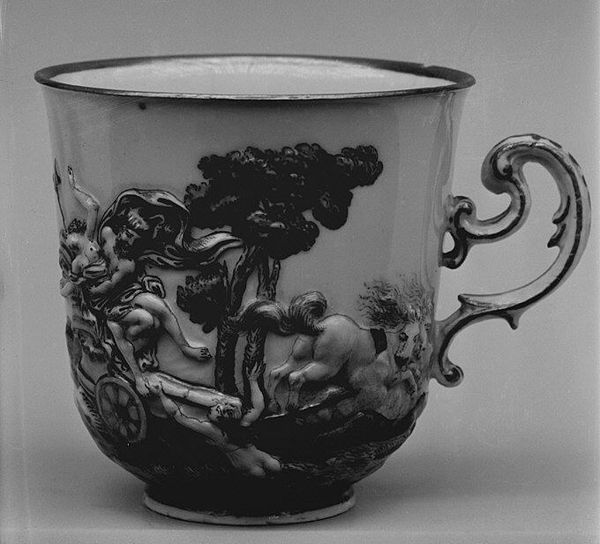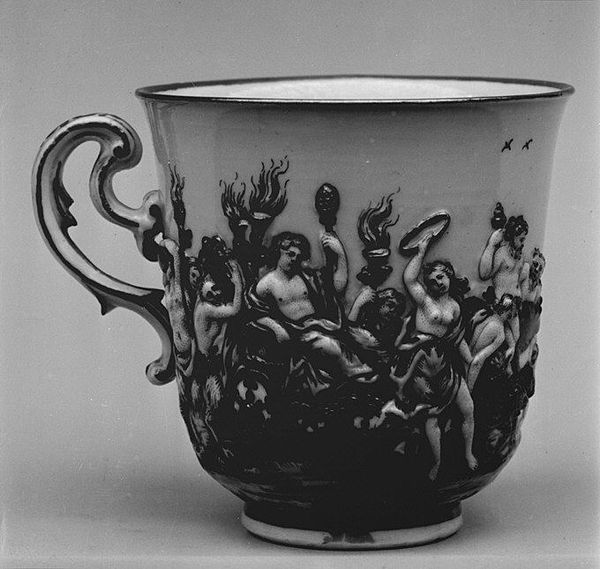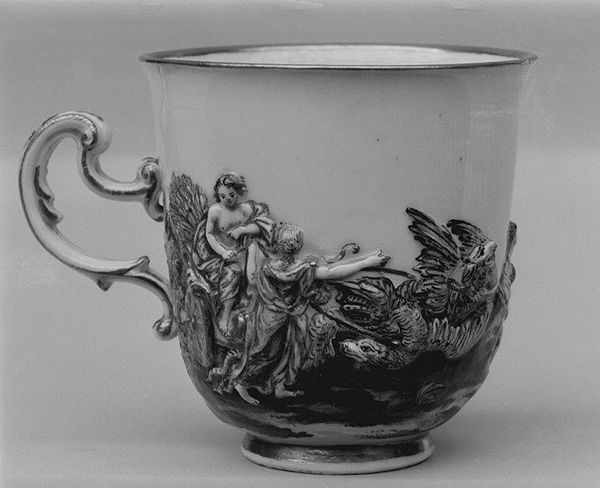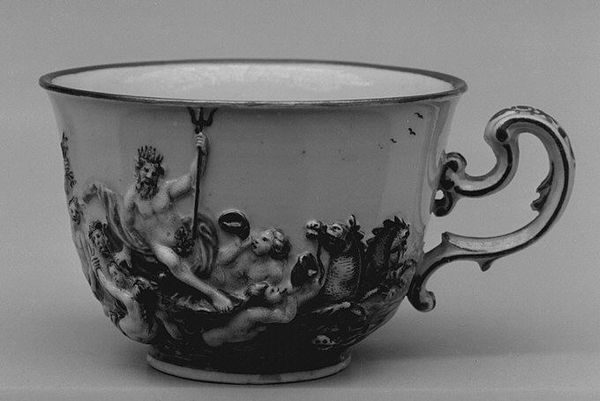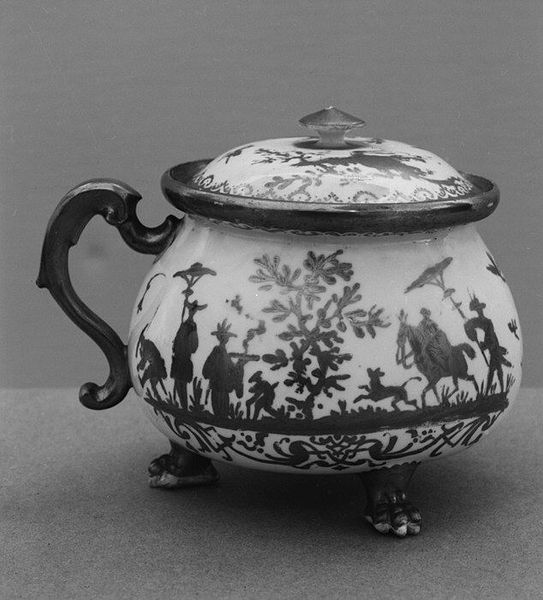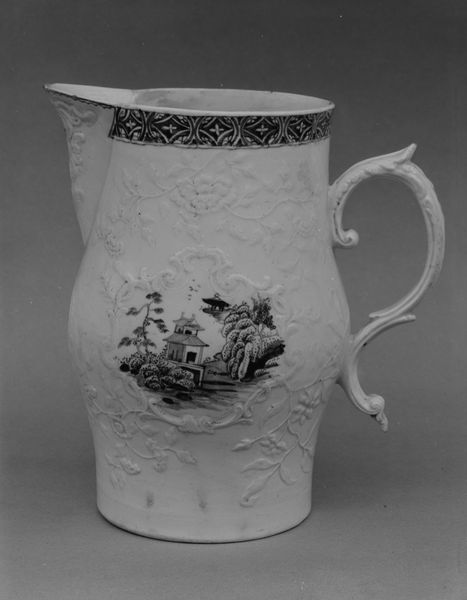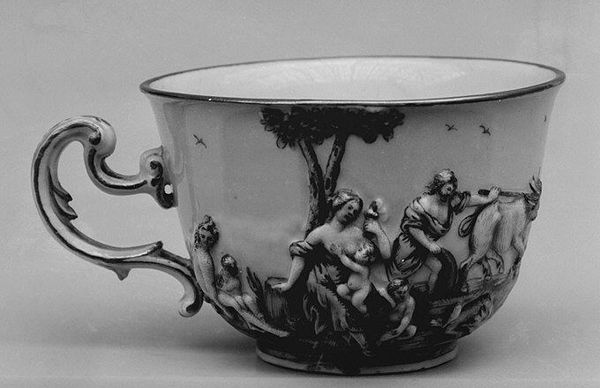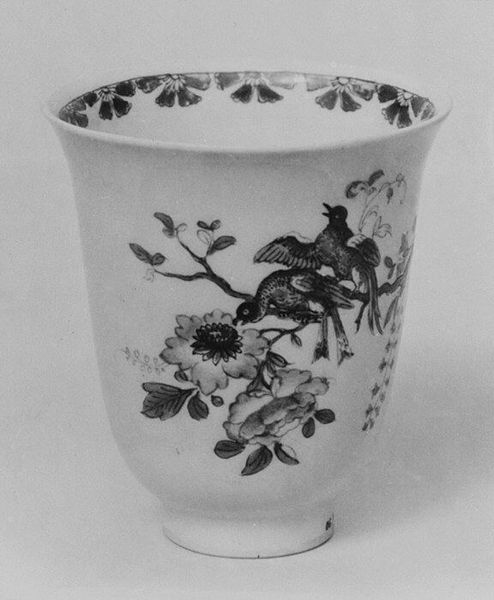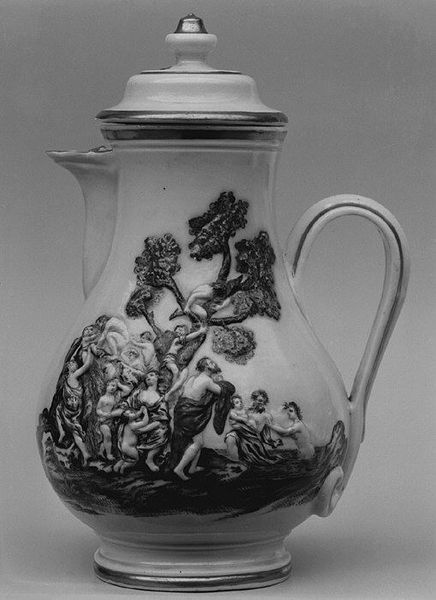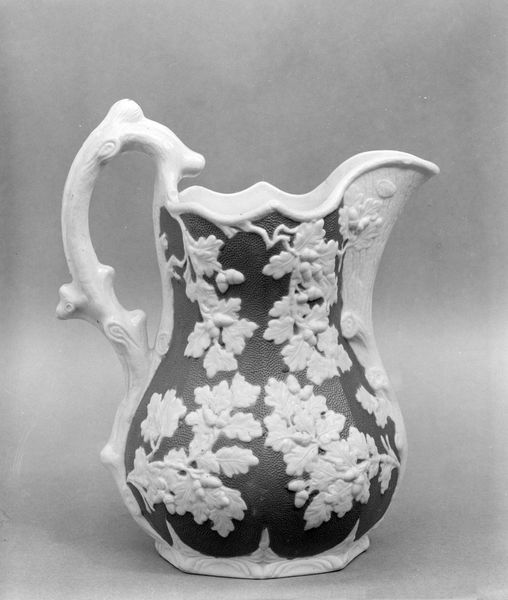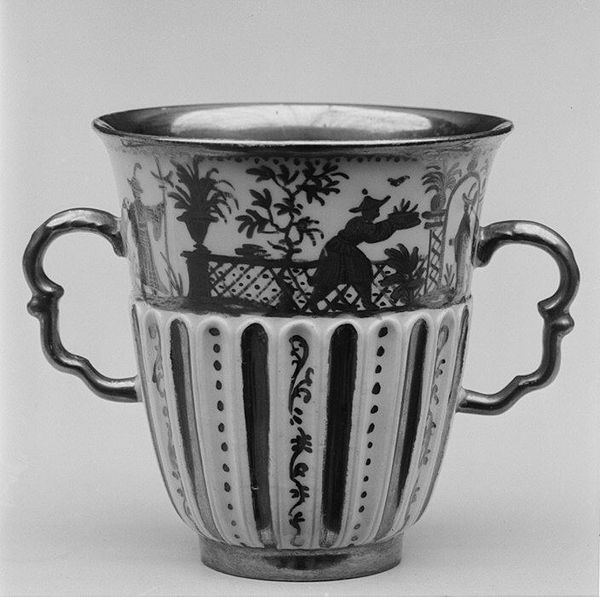
Coffee cup (part of a service) 1755 - 1765
0:00
0:00
relief, ceramic, porcelain, sculpture
#
byzantine-art
#
allegory
#
relief
#
ceramic
#
porcelain
#
sculptural image
#
figuration
#
sculpture
#
monochrome
#
decorative-art
#
nude
#
rococo
Dimensions: H. 3 in. (7.6 cm.); Diam. 2 7/8 in. (7.3 cm.)
Copyright: Public Domain
Curator: It's quite amazing to consider how even an everyday object, like this coffee cup produced by the Doccia Porcelain Manufactory between 1755 and 1765, could carry such profound allegorical weight. Editor: My first thought is, "powerful." Look at the dynamic energy, the almost chaotic scene sculpted on the cup. Those horses seem ready to bolt right off the porcelain! Curator: Exactly! Doccia was really leaning into the Rococo style. Think about the context of 18th-century Europe. Coffee consumption was skyrocketing, becoming a ritual interwoven with social and political life. This cup wasn't just for drinking; it was a status symbol, a canvas for projecting power. Editor: Visually, the imagery strikes me as very Roman in its grandeur. It feels like the cup wants to evoke images of ancient triumphs and Olympian gods, though in miniature. The figure urging on those horses; is that Apollo? He's the guiding principle here, literally driving the cup's meaning. Curator: Art historians usually interpret that figure as a representation of Dawn, driving her chariot, an allegory of new beginnings. But regardless, you're right; mythological figures are used to elevate and idealize. However, this intersects with colonialism, of course, fueled by the products enjoyed by consumers drinking from such a cup. Who benefited? Who was excluded? Editor: And the cup itself, this porcelain, this gleaming surface becomes another layer in understanding. The smoothness allows the monochrome sculpture to have depth. Consider porcelain, too, as almost a symbol itself of trade routes. Curator: Absolutely. What’s really revealing is thinking of objects like this cup not in isolation but within complex systems. We must engage critical approaches that address its social and historical entanglements. Editor: This piece certainly illuminates the fascinating world of cultural symbols. This dialogue highlights how enduring visual elements blend to create potent meanings, inviting consumers, then and now, to explore and engage with them. Curator: A tangible reminder, etched in porcelain, to keep questioning the stories we tell ourselves through objects.
Comments
No comments
Be the first to comment and join the conversation on the ultimate creative platform.
